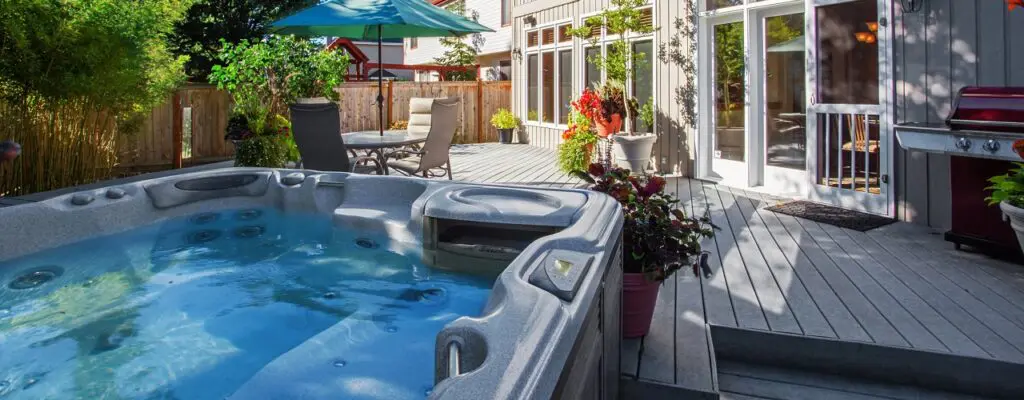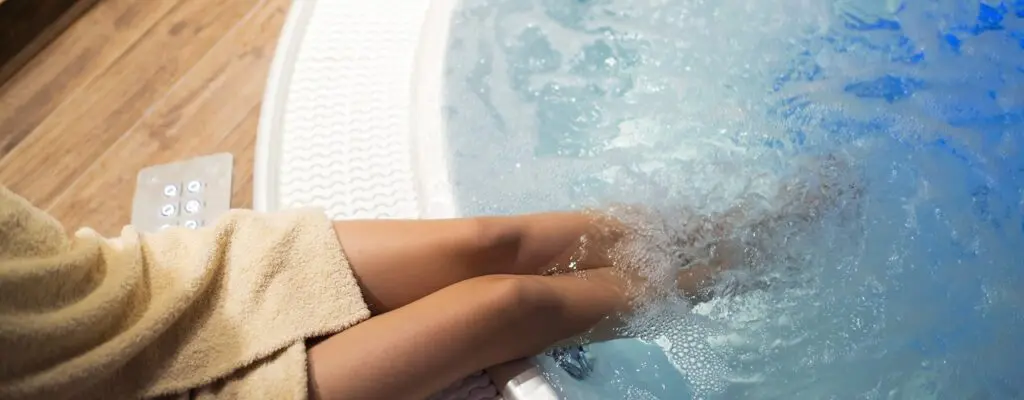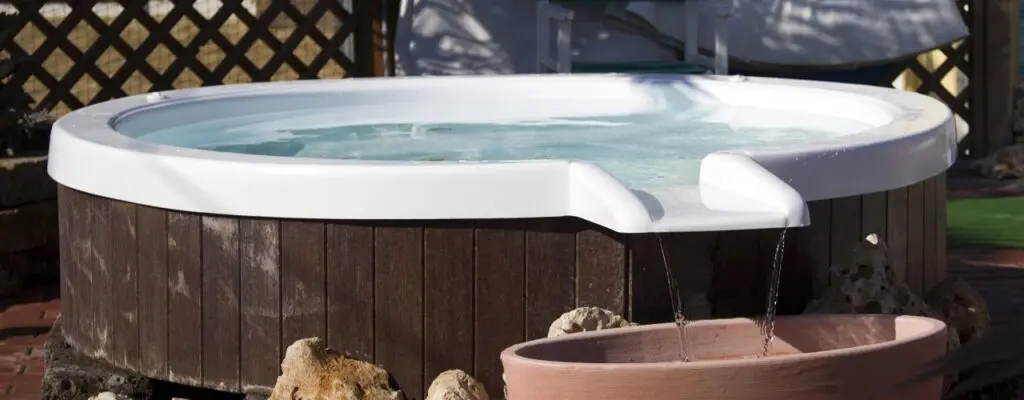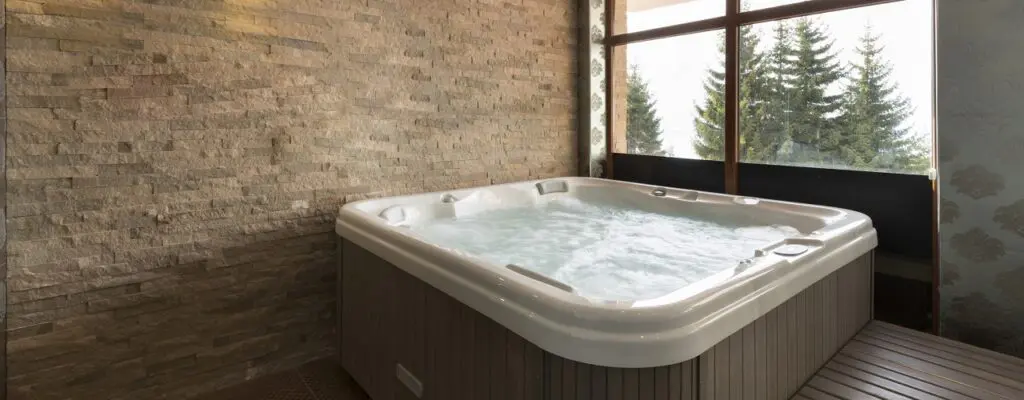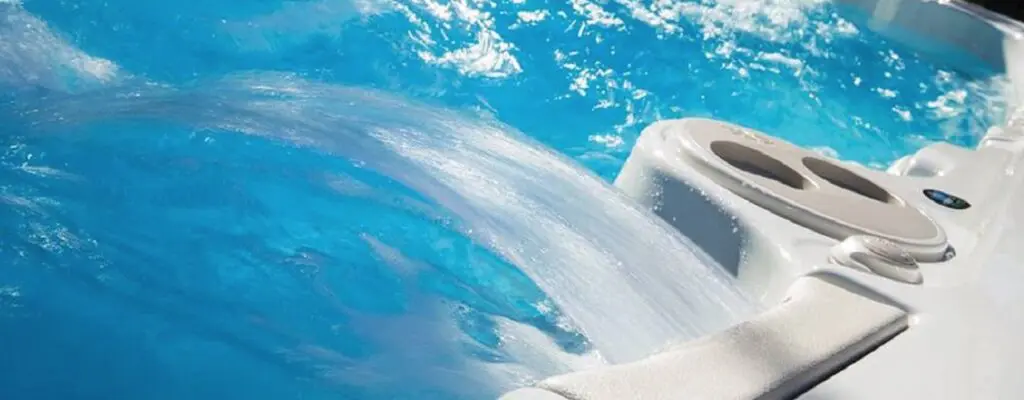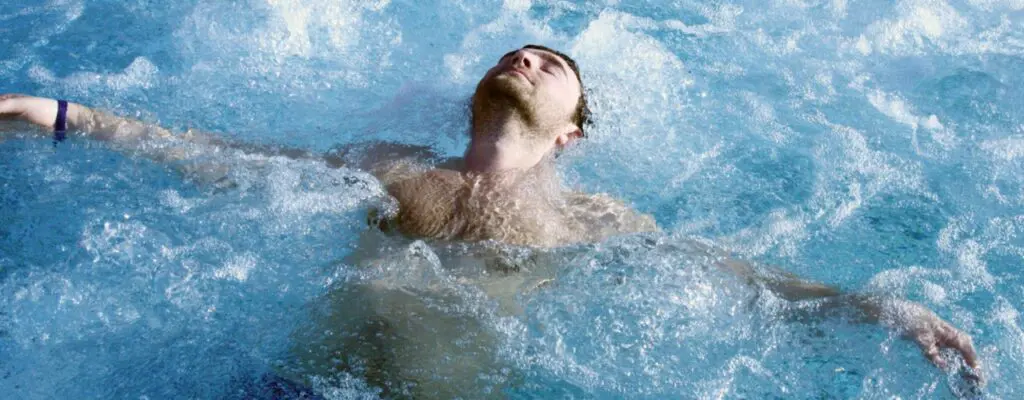
Hot tubs are known for their relaxation benefits but a lesser-known use is that hot tubs are ideal for gentle and low impact exercise to improve your overall health and fitness. This doesn’t need to be difficult exercises, and you can enjoy the benefits that this has on your body from the comfort and luxury of your hot tub. At the same time, the heated water helps to increase your overall blood flow, which in turn helps your body to release any toxins. Here are 5 low impact exercises that you can do from the comfort of your hot tub:
#1 Core extensions
You can work your abdominal muscles gently in the water, and the buoyancy created by the water is fantastic to support your back whilst you do this. Simply put yourself into a sitting position facing into the centre of your hot tub. Hold onto the side with both hands before bringing your knees to your chest, and then extending them completely, keeping your back straight. Repeat this 30 times or as many times as you can until you feel the burn in your muscles.
#2 Heel raises
Heel raises are great for slimming and toning your calf muscles, whilst the water supports your body to improve your balance. Stand with your feet flat, and rock backwards and forwards from the toes to the heels of your feet around 15-20 times, repeating as many times as you like. One tip is to engage your core muscles to help you stay completely upright and avoid injury.
#3 Hand claps
This is one that everyone will be able to do. Stand up in the hot tub or kneel down so that your body is fully submerged in the water. Extend your arms out beside you with thumbs towards the sky, and then as quickly as you can bring your palms together, keeping your arms straight. The water provides good resistance to work your arm and shoulder muscles. Repeat 10 times for one set, pushing faster each time.
#4 Supported squats
Squats can be tricky and put strain on the knees, but in a swim spa this strain is taken away through the buoyancy of the water. Stand with your knees bent and your hips tilted back. In repetition, bend your knees to squat as low as possible, then stand up and push your hips forward to full extension whilst squeezing your glutes.
#5 Underwater cycling
Even if you don’t have an underwater exercise bike, you can replicate this movement with your legs under the water in your hot tub. Do this in a seated position and extend your legs in front of you before making pedalling movements as quickly as you can, but with controlled movements. Keep going for as long as you can, and you will begin to feel your muscles working after a little while.
Exercise recovery
These exercises are all easy to do within your hot tub, with the water acting as a support, which is useful if you are suffering from an injury or joint pain. But perhaps the nicest part of the whole experience is relaxing in your hot tub after exercising. The warmth of the water is soothing for your muscles and can help you to fully relax and recover quickly.
Take a look at our full range of hot tubs or give one of the Hot Tub and Swim Spa Company a call today on 0208 300 4003 to find out more.
